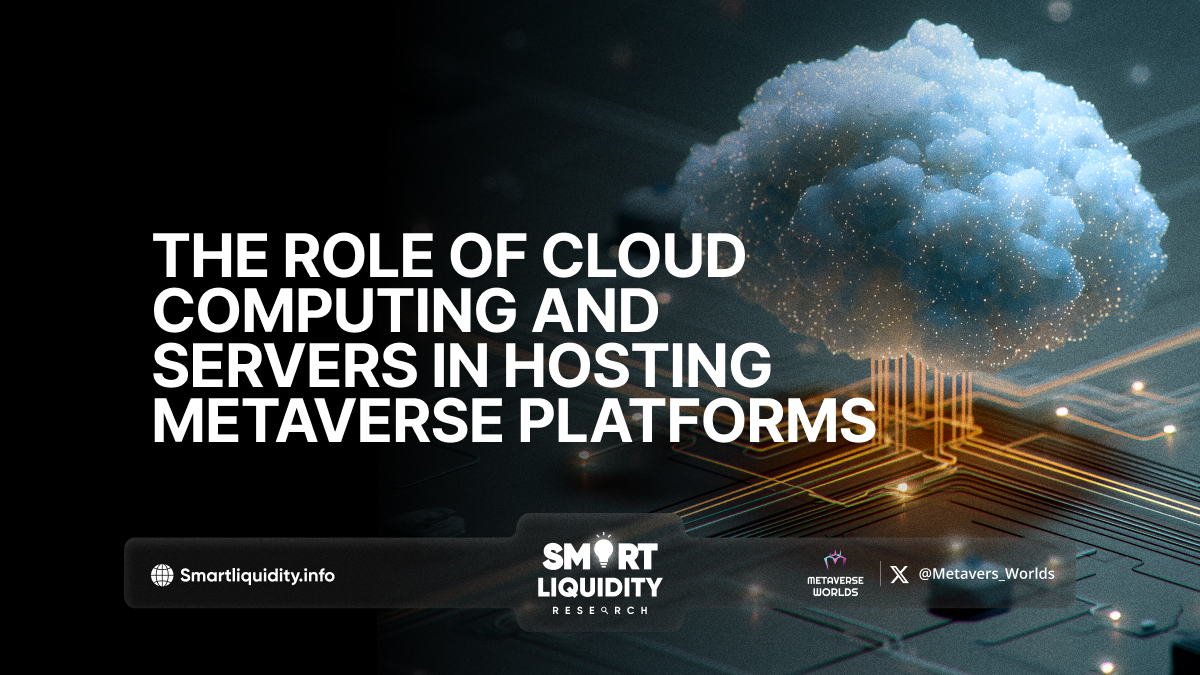The Role of Cloud Computing and Servers in Hosting Metaverse Platforms


The metaverse, a term once confined to science fiction—is now shaping up to become one of the most transformative digital experiences of the 21st century. As tech giants and startups alike race to build immersive virtual worlds, one question looms large: how is all of this powered?
The answer lies in the seamless integration of cloud computing and high-performance servers, the invisible engines that power these vast, interconnected digital universes. Without them, the metaverse wouldn’t be much more than a buzzword.
What Is the Metaverse, Really?
Before diving into the backend, let’s clarify what we mean by the metaverse. Think of it as a persistent, real-time, 3D digital space where users can interact with others, engage in commerce, attend events, and even build virtual economies. It’s not just gaming—it’s workspaces, education, entertainment, and social platforms merging into a single experience.
But this persistent, immersive, and global experience requires far more than a typical web server.
The Cloud: Backbone of the Metaverse
Cloud computing plays a foundational role in making the metaverse scalable and accessible.
Scalability and Elasticity
The metaverse must handle millions of concurrent users, sometimes spiking in real time during events or launches. Cloud platforms like AWS, Microsoft Azure, and Google Cloud provide elastic infrastructure that can scale instantly to accommodate demand—without needing physical hardware upgrades.Global Distribution
Cloud services operate data centers across the globe. This ensures that metaverse experiences can be delivered with low latency, regardless of where users are located. Content delivery networks (CDNs) and edge computing nodes help reduce lag and improve real-time interaction, which is critical in immersive environments.Storage and Compute Power
From avatars and NFTs to entire digital cities, the metaverse requires massive storage and compute resources. Cloud platforms offer virtually limitless space and GPU-based compute instances to handle real-time rendering, physics simulations, and AI integration.
High-Performance Servers: The Real-Time Engine
While cloud computing provides the infrastructure, high-performance servers are the beating heart of metaverse platforms. These servers manage real-time processing, physics calculations, spatial audio, and multiplayer synchronization.
Low-Latency Networking
Real-time collaboration, combat, or communication demands near-instantaneous data exchange. Servers need to maintain persistent connections between users with sub-second latency, especially in VR environments where delays can break immersion—or cause motion sickness.Instance Management
Some metaverse platforms divide virtual spaces into “instances” or “shards” to manage user load. Sophisticated server orchestration ensures these instances run smoothly and users can seamlessly jump between them.AI and Physics Processing
AI-driven NPCs, realistic physics, and interactive environments require significant compute power. Dedicated servers often offload these tasks from the user’s device, allowing even users with lower-end hardware to experience high-fidelity worlds.
Hybrid Architectures: Edge + Cloud + On-Prem
Some of the most advanced metaverse platforms adopt a hybrid architecture, combining the cloud with on-premises or edge servers:
Edge computing brings computation closer to users, reducing latency and bandwidth use.
On-prem servers may still be used by enterprises or gaming studios for specialized workloads.
Cloud integration ensures that platforms remain elastic and globally accessible.
This blend ensures that performance, reliability, and cost-efficiency are balanced at scale.
Challenges and Considerations
Despite its power, the infrastructure behind the metaverse isn’t without its challenges:
Data Privacy and Security: The more immersive and personal the metaverse becomes, the more data it collects. Protecting user identity and interactions is paramount.
Environmental Impact: High-performance servers and massive data centers consume significant energy. Sustainable practices and green cloud initiatives are essential.
Interoperability: Multiple metaverse platforms mean multiple architectures. Creating standards that allow for cross-platform experiences is still a work in progress.
Conclusion: Infrastructure Will Define the Future of the Metaverse
As the metaverse evolves from experimental spaces into fully-fledged digital economies, the importance of cloud computing and server infrastructure will only grow. These technologies determine not just how many users can log in—but how immersive, responsive, and meaningful their experiences will be.
In many ways, the race to build the metaverse is just as much a race to optimize cloud architecture and server performance. For developers, entrepreneurs, and users alike, understanding this invisible layer could be the key to unlocking the next generation of digital interaction.
REQUEST AN ARTICLE
Disclaimer:
This article is for informational purposes only and does not constitute financial advice. Readers are encouraged to conduct their own research and consult with a financial professional before making any investment decisions.




